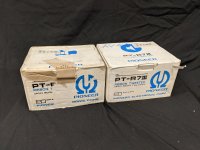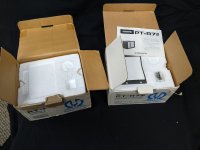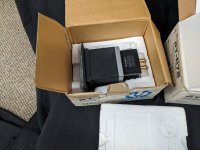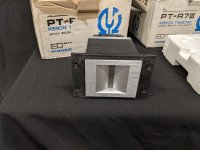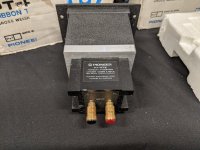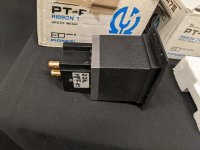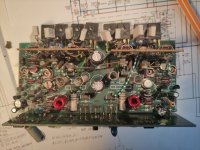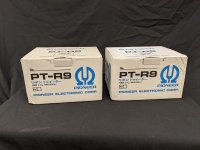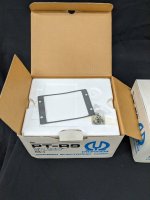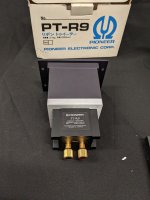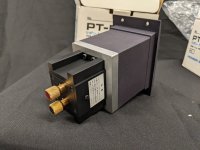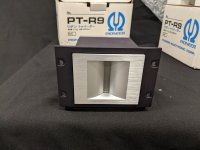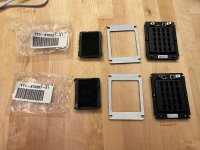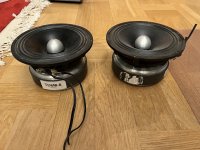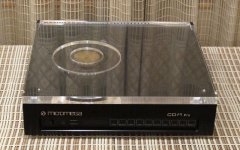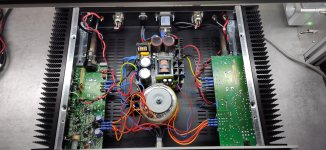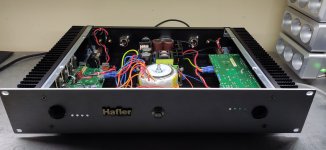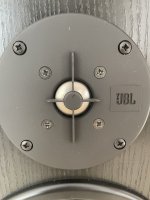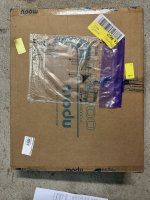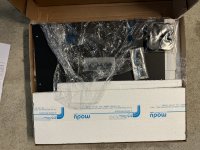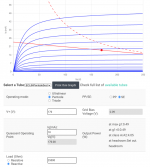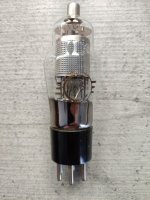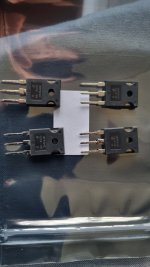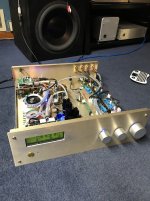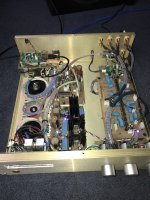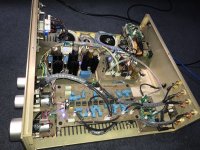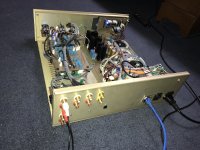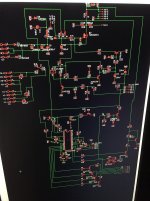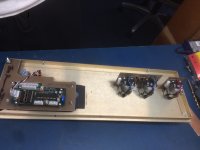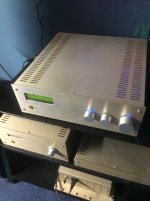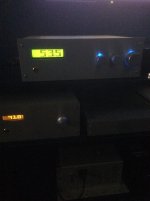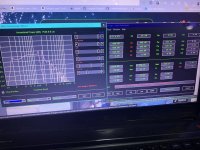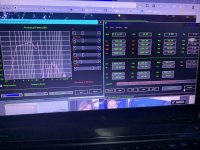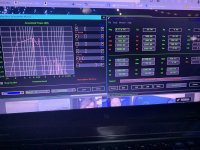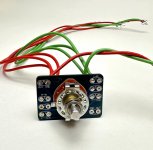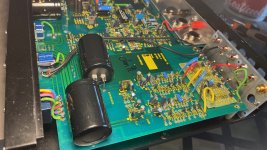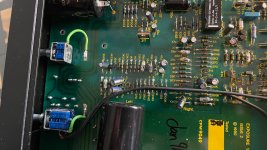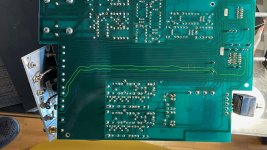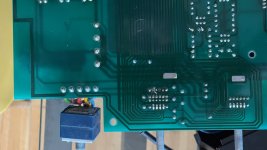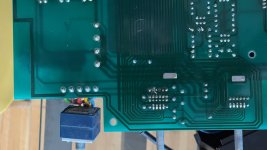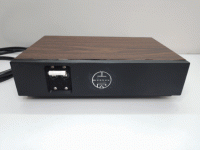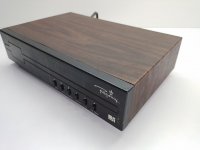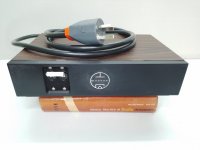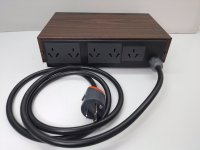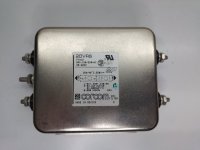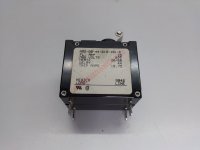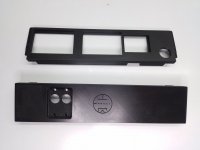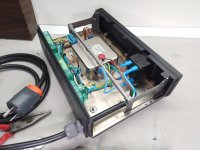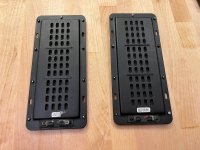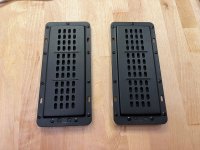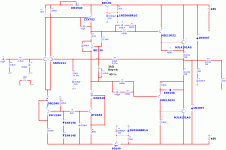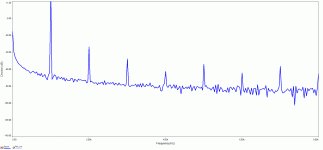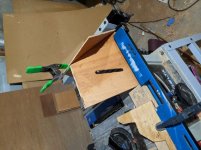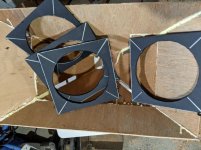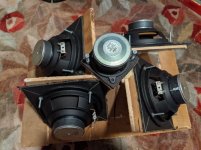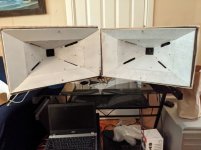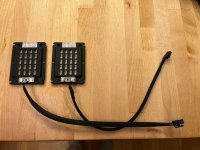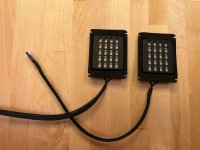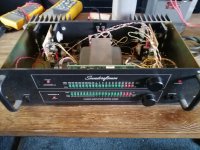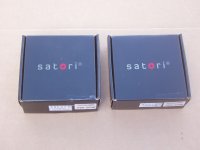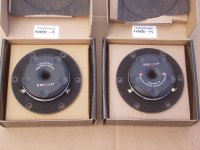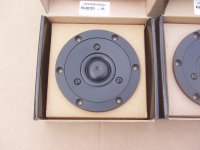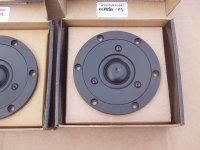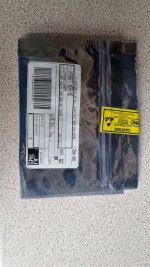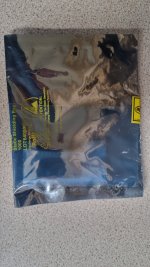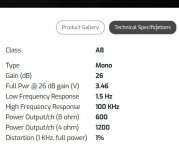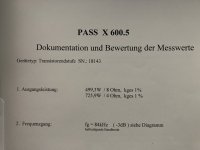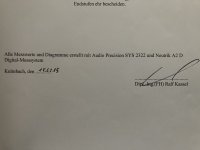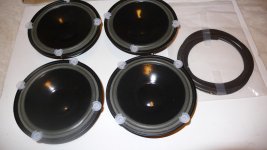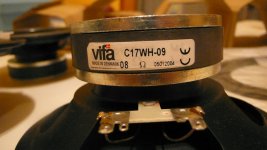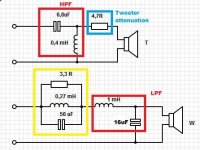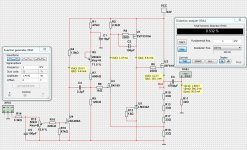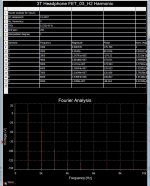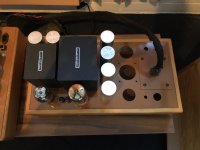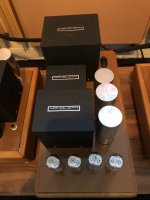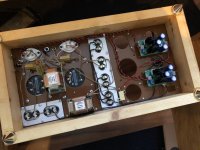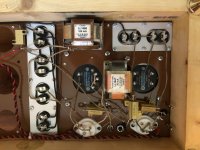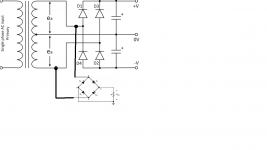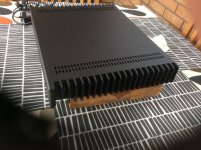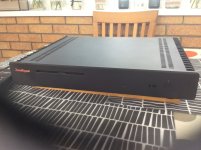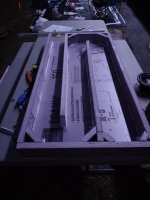Hi folks,
It's 2016 now, and it seems there's no recent build thread. I just started the Naim clone project. If interested, please join here and discuss for mods, experience etc.
I will post any information I've collected.
I started this new thread because I want to reorganize information which makes DIYer easier to read, and always kept updated.
My goals:
1. Optimize its performance while keep it sound as good as originals
2. Use modern part, tech, knowledge
3. Either Major/minor modifications are OK
The original schematic
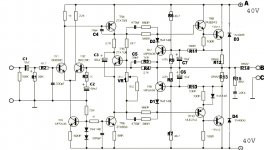
Neil Mcbride's
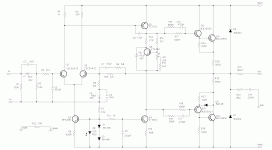
A MosFet Mod
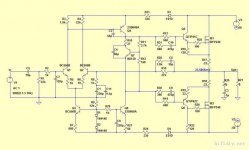
LTSpice file, for your convenience:
View attachment NAP 140Bjt.zip
Multisim MS13 file:
View attachment NAIMp.zip
Some useful links
Modifying Naim Audio power amplifiers
Neil McBride's HiFi Stuff
2016/8/11 Adapted from Ian/rensli's post and others.
Inadequate filtering on the output:
They need an output coil. A 0R22 resistor just doesn't do it.
Still interference:
This doesn't stop all interference and one of the worst problems is long speaker speaker leads with the wrong reactance (L and C). The right type of cable, and it's not some exotic overpriced cable - snake oil issue, is detailed many times on the Naim audio site and forum plus the UK forums like PFM that recycle the topic ad infinitum.
For interest, I largely solved the problem with passing the leads 6 times through 32 dia. toroidal ferrite cores 0f 2-10 MHz range and changing the cable to a cheap, close spaced one, moving the amplifier to an elevated shelf between the speakers and removing the excess cable to about 2.5m lengths.
Drivers:
TIP41/42 drivers seem unlikely with their stone age performance but somehow, they work with little difference to MJE243/253 at typical domestic sound levels.
TIP41C/42C as drivers is good choice.. make sure they are not new chinese "fairchild" type.
Output transistors
have varied from 2SC5200/A1943 to the suspect MT200 Sankens now supplied but here I used my own supply of 2SC5200/A1943(O)
2SC5200 with higher gain drivers will lead to bad sound and oscillations.
Input transistors
I could go through all the substitutes for the small transistors but you may note that is essential to fit the right MPSA06/56 limiter types to get correct action
Input stage types don't seem to be too fussy but if you think there should be a benefit in using matched pairs, guess again.
input stage
Intentionally thrown way out of balance to ensure that even order harmonics are not cancelled as the LTP is normally inclined to. This is largely what permits a desirable SQ .
VAS transistors
These should always be the original ZTX 653/753 from Diodes Inc.
Why? because they have high Cob (30pF) and speed, an unusual combination in a tiny 2W package. Being expensive at ~$1 ea, they were among the first parts to be ditched from the clone kits when the competition heated up a couple of years ago but rest assured that the low Cob types like 2SD667/B647 (12-20pF)and BC639/40 (On-Semi 6-9pF!) (variable according to manufacturer) begin to sound awful.
Caps
Polystyrene fails when old due to foil to wire corrosion . Philips used lead foils to overcome this , now banned .
COG ceramic are very good.
Don't use non-GOG( NPO ) ceramics!
Mylar are OK .
MKT caps in particular are usually the worst type to use.
Transformer/Power
Dual 27~28Vac -> 35~40VDC
160VA or 300VA should be plenty and are common sizes for use with each or both channels respectively.
rensli:
Using regulated/double filtered psu for the front end will kill the sound for sure.
330R + 220uF filters in both supply's to the front-end is a way better idea - it will dampen down dynamics...on the good side.. you could turn the volume knob all the way up without compression. In overall, there you have to decide... do you want to listen to music or the background from the same music. If you pick last one, then go ahead and regulate/separate front-end... at the end it will be then hard to get good loud sound out of that amp ... you will be surprised how well it play's @ 20-30% volume, any higher level will be hell of a mess.
Tantalum caps on Naims
Electrolytics @ feedback and bypass is OK, but not as good as with PROPER TANT's.
The sound has changed but not necessarily been improved by substituting electrolytic caps.
2016/8/27 comments by Chris "anatech"
Which by definition, don't fit.
A couple rules of thumb for anyone working on any product. If the component doesn't fit where the old one did, don't use it. Secondly, never extend the leads to a component to mount it elsewhere! There are numerous reasons why you shouldn't do this, take your pick.
If you just want the best sound possible, go with polypropylene, but lead them off-board to the input sockets and well away from power leads. Use decent standard electrolytics like Panasonic or Rubycon etc. elsewhere.
******
Forum member Ruwe:
- Input transistors: ZTX692 - huge gain => very low base current => very low input distortion due to source equipment impedance and so on.
- VAS, current sources: XTX753/ZTX653
- Drivers: MJE243/253
- Output transistors: MJ3281 - best possible compromise current/price/bandwidth
- power resistors :
metal element, not wire wound. You can try that one (say 0.12-0.15 ohms) instead of a coil/resistor output combination. It works and sounds similar.
- capacitors :
styroflex (polystyrene) wherever possible, bipolar electrolytics of good quality for input and feedback. I use Mundorf. Or use tantalum, but watch for polarity.
- don't underestimate the power supply bank capacitors. Some high current computer grade work. Currently, I use Mallory 2x10000uF.
The rest is proper grounding, which means, no loops, no redundant grounds, no thin wires.
Join and have fun!
